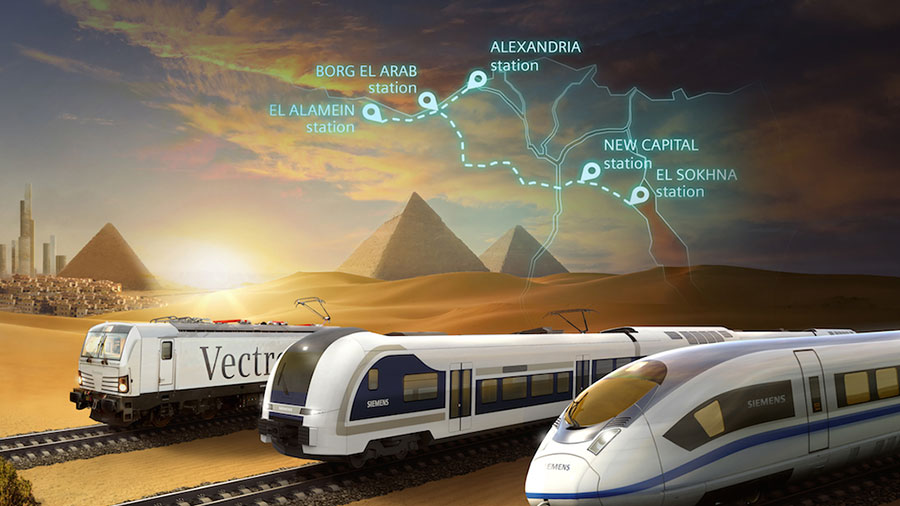New High-Speed Egyptian Rail To Link Red & Mediterranean Seas

Op/Ed by Chris Devonshire-Ellis
- New rail link not part of BRI but links to BRI projects
- Example of international cooperation with Belt & Road Initiative
- Egypt is part of AfCFTA which began January 1 and promotes free trade throughout Africa.
Egypt is to build its first high-speed train line, which would connect the Red Sea to the Mediterranean. The route will stretch approximately 1,000 km (621 miles) and will have fifteen stations.
The first line is planned to run 460 km (285 miles) from Ain Sokhna on the Gulf of Suez in the east. It will be laid through Egypt’s New Administrative Capital, a large-scale smart city project that has been under construction since 2015, located 45 km (approximately 28 miles) east of Cairo. The line will then continue to El Alamein on the Mediterranean coast.
The second leg of the railway would link the Red Sea’s main port with Alexandria and the port of Matrouh Gargoub, the third would connect Hurghada and Safaga with Qena and Luxor, and the fourth would connect Six October city with Luxor and Aswan.
On 14 January, Egypt’s National Authority for Tunnels signed a memorandum of understanding with Egyptian firms Orascom Construction and Arab Contractors as well as with Germany’s Siemens Mobility to design and build the high-speed rail system. The companies will reportedly be paid US$23 billion for building and maintaining the network over 15 years.
Both of the lines should be operational within two years; the first Suez-El Alamein route is scheduled to be completed in 2023. Siemens is a producer of the popular Velaro high-speed trains that are used in several countries including Russia, Turkey, and China.
Egypt has had a train network since the 1850s and was the first country in Africa and the Middle East to have one. Egypt’s current train system is extensive, with more than 3,000 miles of tracks connecting nearly every major city and town. However, the system is also antiquated and underfunded. While construction is underway on new tracks for the high-speed train, Egypt is also now receiving a monthly shipment of new Russian-made train carriages to upgrade its current fleet until the Siemen’s models are ready to be installed.
The project is not part of the Belt & Road Initiative as it does not feature Chinese financing or contractors. However it does interface with both Chinese and Russian infrastructure build in Egypt. Russia has invested in the Port Said Industrial Economic Zone just outside Suez to manufacture mainly auto components, while China is building the new administrative centre just outside Cairo which the new rail route will service. This is a classic example of how international infrastructure developments and connectivity are being built in collaboration with the BRI.
Related Reading
- Five MENA Belt And Road Projects Foreign Investors Should Be Aware Of.
- The African Continental Free Trade Agreement Starts From 1st January 2021.
About Us
Silk Road Briefing is written by Dezan Shira & Associates. The firm has 28 offices throughout Asia, and assists foreign investors into the region. For strategic advisory and business intelligence issues please contact the firm at silkroad@dezshira.com or visit www.dezshira.com





